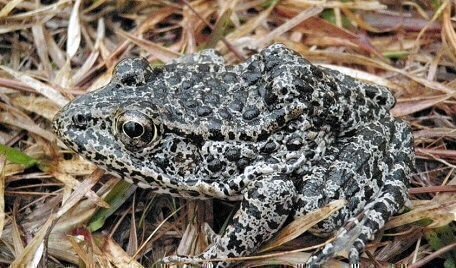On Monday, the Supreme Court started its new term hearing arguments about a subject never really discussed on the bench before: amphibians.
 The exact amphibian in question is known as Lithobates sevosus, aka Rana sevosa aka the dusky gopher frog. While the frog wasn’t a direct party in Weyerhaeuser Company v. United States Fish and Wildlife Service, its name came up 48 times during arguments, in the case’s official court transcript.
The exact amphibian in question is known as Lithobates sevosus, aka Rana sevosa aka the dusky gopher frog. While the frog wasn’t a direct party in Weyerhaeuser Company v. United States Fish and Wildlife Service, its name came up 48 times during arguments, in the case’s official court transcript.
That in itself appears to be a record for references to frogs, toads, amphibians, and reptiles at the Supreme Court if a publicly accessible archive of most Supreme Court cases at Free Law Project’s Court Listener website is an indicator. While Court Listener doesn’t include transcripts in its archives, which go back to John Marshall’s time as Chief Justice, it does list most Court decisions starting with the Marshall era.
In all, the word “frog” or its derivatives appears in just 20 search results in the Court’s canon of decisions. In most cases, the word was used in cases between 1885 and 1947 about railroad track switches, where the “frog” is the point where two tracks cross inside the switch.
As for the hopping amphibian, there wasn't a reference to an actual live situation involving a frog, or even a hapless toad in that Supreme Court archive. (Last year, there was a passing reference to amphibians in Justice Stephen Breyer’s majority decision in Florida v. Georgia.)
But on Monday, Lithobates sevosus was on center stage as a topic for the eight Justices. The case is a dispute over land in Louisiana dedicated to protecting the endangered dusky gopher frog, which currently doesn’t live in the state.
The small population of gopher frogs resides in Mississippi. The Fish and Wildlife Service ordered a 1,500-acre tract of privately owned land in Louisiana protected as a potential breeding and living space for the frogs as a “critical habitat.” Some changes would need to be made to that land to make it more frog-friendly. Weyerhaeuser and other parties claimed the Fish and Wildlife Service designation could cost them $34 million in lost development value of the land.
Chief Justice John Roberts, while making an incidental reference to “draining the swamp,” wondered if there should be limits to protecting an environment that wasn’t ready-made for an endangered species. “If you have the ephemeral ponds in Alaska, you could build a giant greenhouse and plant the longleaf pines and the frog could live there. In other words, there has to be presumably some limit on what restoration you would say is required,” he asked Deputy Solicitor General Edwin Kneedler.
Justice Samuel Alito then said the debate wasn’t about saving the dusky gopher frog, but “who should pay for the preservation of this public good.”
Near the end of arguments, Justice Sonia Sotomayor told Weyerhaeuser’s attorney, Timothy Bishop, about one possible outcome in the dispute. “If it's critical [habitat], they can designate it and then a deliberate process goes on where they talk to the owners, and you come to an accommodation. That's what generally happens,” she said.
Bishop said under that scenario, Weyerhaeuser may only get to use 40 percent of the land. “We don't think that that is an appropriate use of our land, given that this is not habitat to begin with,” he argued.
Scott Bomboy is editor in chief of the National Constitution Center.







